Inside the ACC Numbers: Volume III
Posted by Brad Jenkins on February 7th, 2019Here’s another edition of our weekly view at the current ACC standings with a focus on which teams are playing better or worse than their conference records may indicate. We will also delve into some advanced metrics to share a few interesting notes on teams, statistics and trends around the conference. This week we evaluate how ACC teams are performing on the road versus how well they play in the cozy confines of their home gyms. Finally, we will forecast how the final league standings may look given current efficiency margins, and what that may mean for teams’ ultimate postseason aspirations.
Note: All numbers are current for games played through Tuesday, February 5.
Current Standings
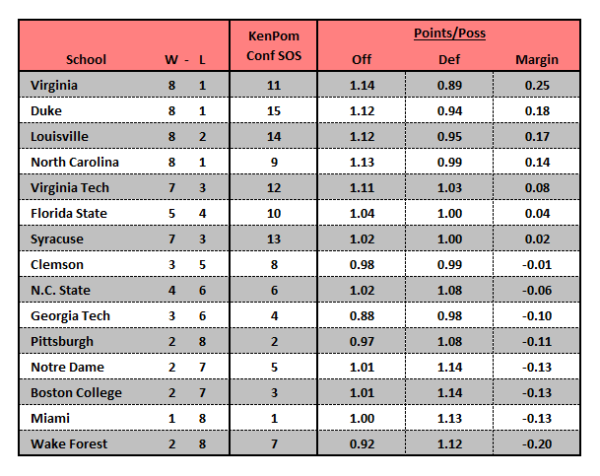
The ACC has a top tier of four teams in efficiency margin with Virginia still comfortably leading the way. It will be interesting to see how the ACC’s upcoming schedule shakes things up. The Cavaliers start a pivotal three-day stretch with Saturday’s home game with Duke, followed by a quick turnaround trip to Chapel Hill to take on red-hot North Carolina team on Monday night. Louisville is also staring at a difficult two-game slate over the next seven days — the Cardinals visit Florida State on Saturday before taking on Duke at home on Tuesday evening. Syracuse has been the most fortunate squad in the first half of ACC play this season. At 7-3, Jim Boeheim’s team is already four games above .500 despite barely outscoring its opponents. Looking at the bottom of the conference, Wake Forest has been the league’s worst performing team by a wide margin, but the Demon Deacons have managed to post a similar record to the five schools directly above them. That’s because Wake Forest has gone 2-1 in ACC games that were decided by four points or fewer. In their other seven outings, the Deacs have been beaten by double-figures.
Advanced Statistic of the Week: Home Sweet Home in the ACC
Read the rest of this entry »




























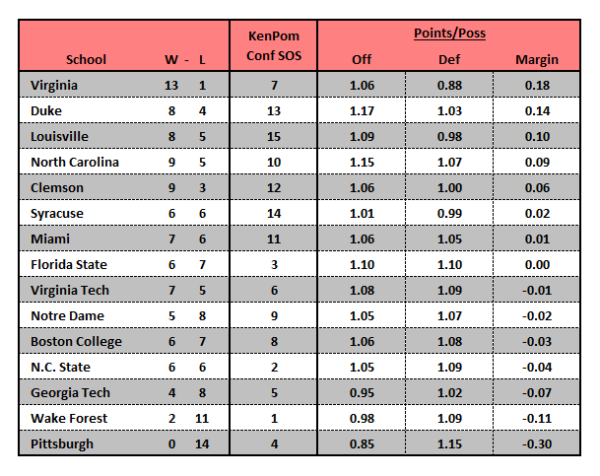
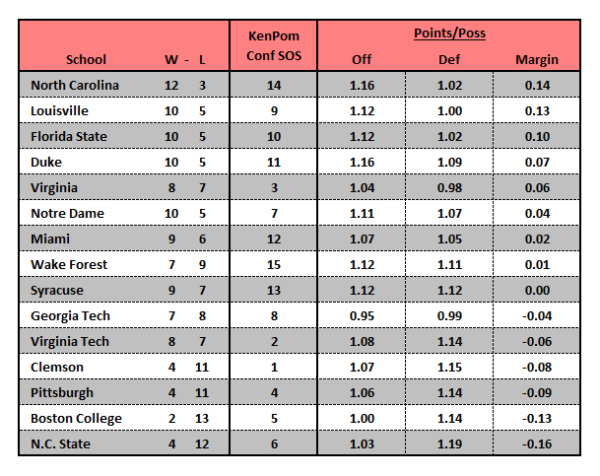
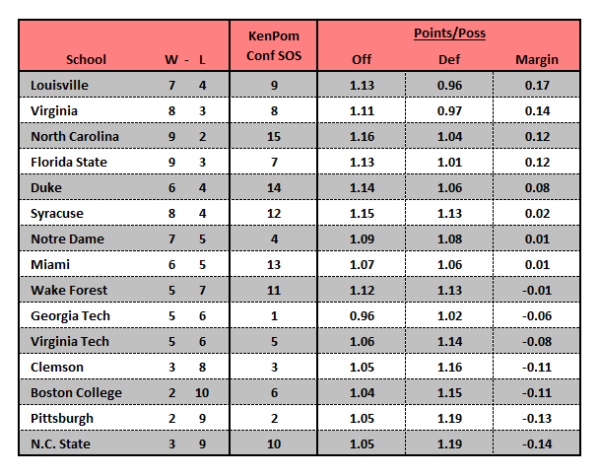
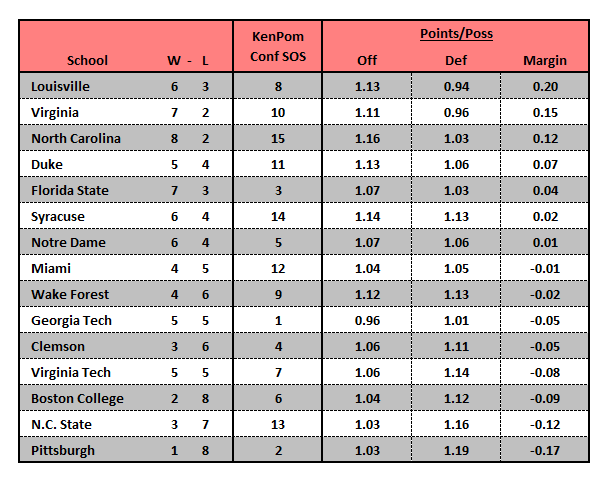
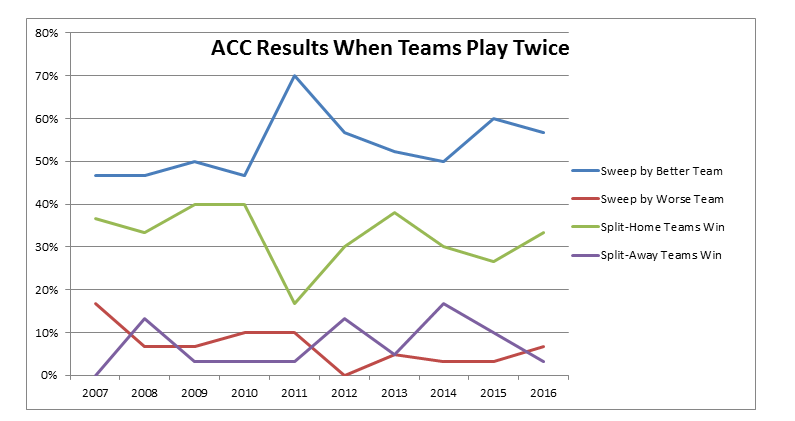
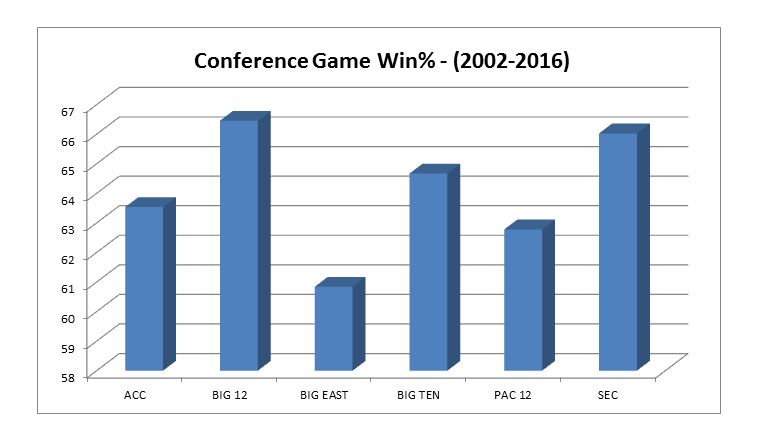
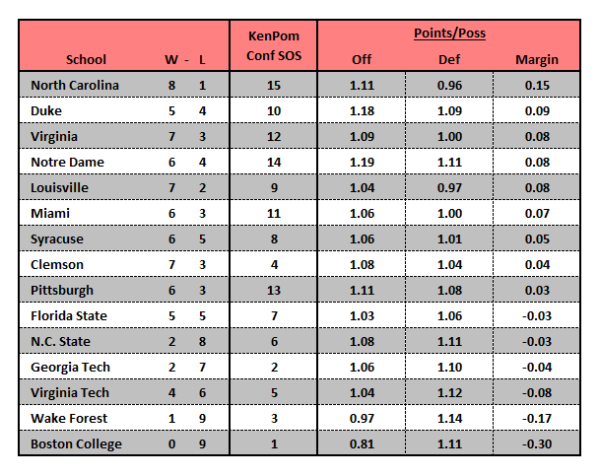 Despite Monday night’s defeat at Louisville, North Carolina is still the ACC’s best team in both the standings and in points per possession (PPP) margin. Interestingly, even though much has been made of Duke’s struggles (the Blue Devils are currently in eighth place), it has outperformed every team but one above them in the standings. It appears that Mike Krzyzewski’s team’s inability to win the close ones is the real issue that must be fixed — Duke has lost all three of its contests that were decided by five points or fewer. Conversely, Clemson and Pittsburgh have each benefited by winning all three of their five-point or fewer margin games. Looking further down the standings, we see that N.C. State and Georgia Tech have basically performed at a level equal to Florida State and better than Virginia Tech, but they trail both of those teams in the current standings by at least two games. Heading into the back nine of conference play, future opponents should consider themselves warned — the Wolfpack and Yellow Jackets may barely rank above the likes of Wake Forest and Boston College in the standings, but they are both significantly better than the leagues’ worst two teams.
Despite Monday night’s defeat at Louisville, North Carolina is still the ACC’s best team in both the standings and in points per possession (PPP) margin. Interestingly, even though much has been made of Duke’s struggles (the Blue Devils are currently in eighth place), it has outperformed every team but one above them in the standings. It appears that Mike Krzyzewski’s team’s inability to win the close ones is the real issue that must be fixed — Duke has lost all three of its contests that were decided by five points or fewer. Conversely, Clemson and Pittsburgh have each benefited by winning all three of their five-point or fewer margin games. Looking further down the standings, we see that N.C. State and Georgia Tech have basically performed at a level equal to Florida State and better than Virginia Tech, but they trail both of those teams in the current standings by at least two games. Heading into the back nine of conference play, future opponents should consider themselves warned — the Wolfpack and Yellow Jackets may barely rank above the likes of Wake Forest and Boston College in the standings, but they are both significantly better than the leagues’ worst two teams. 













